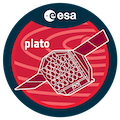Speaker
Description
The installation in 2012 of the high-resolution, ultra-stable spectrograph HARPS-N at the Telescopio Nazionale Galileo has represented a pivotal point for the mass determination of super-Earths and mini-Neptunes from the Northern Hemisphere. In synergy with Kepler, TESS and CHEOPS space missions, the HARPS-N Collaboration has provided accurate densities for over 50 transiting small planets and masses for several non-transiting planets, with periods ranging between a few hours to decades. With time, we have realised that stellar activity is the main limiting factor towards reaching and surpassing the ten cm/s barrier for characterising Earth analogues. One may naively think that old stars quieter than the Sun could represent a viable alternative to a complex and still incomplete modelling of stellar activity, but our experience proves otherwise. After a brief introduction of the HARPS-N Collaboration, in this talk I will present two emblematic cases of planets with contrasting mass measurements, despite the nearly undetectable activity levels of the stars and the use of extremely-precise spectrographs: the Ultra-Short Period super-Earth TOI-561b and the Cold Jupiter Kepler-68e. I will then corroborate, with other examples, how observational strategy and rigorous data analysis techniques routinely employed by the HARPS-N Collaboration ensured reliable and accurate determinations of the architecture of the planetary systems, which were later confirmed by additional observations. The decade-long follow-up on active and quiet stars by the HARPS-N Collaboration has yielded valuable lessons that will play a critical role in achieving the scientific goals of the PLATO mission.

